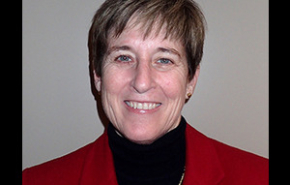IASS Webinar 26: Integrating Survey and Non-Survey Data in the Production of U.S. Official Agricultural Statistics: A Progress Report
| Date | 22 Feb 2023 |
| Time | 13:00 GMT+01:00 - 14:30 GMT+01:00 |
| Level of instruction | Beginner |
| Instructor |
Linda J. Young
|
| Registration fee | |
Each year the United States Department of Agriculture’s (USDA’s) National Agriculture Statistics Service (NASS) conducts more than 100 surveys and produces more than 400 reports on all aspects of U.S. Agriculture, ranging from estimates of corn and cattle production to agricultural prices and expenses. For over a half century, sample surveys have been the foundation for producing these official statistics. In recent years, as is common with other National Statistical Agencies, response rates and the coverage of the NASS list frame (of all known U.S. farms) have continued to decline. Further, because U.S. agricultural production is increasingly concentrated in a few large farming operations, the quality of the official statistics produced relies heavily on obtaining responses from the producers of these large farms. Consequently, these producers may each receive more than 20 surveys each year, constituting a heavy reporting burden. At the same time, non-survey data, including administrative, remotely sensed, and weather data, have become increasing available. NASS is currently working to incorporate more non-survey data in the estimation process to improve the precision of the estimates while reducing reporting burden. Two approaches to integrating survey and non-survey data are (1) to combine survey estimates and non-survey information at some specified level of geography through modelling and (2) to link the survey and non-survey data at the farm level and then to produce estimates based on the linked data. To date, NASS has taken approach (1), using Bayesian models to combine survey and non-survey data at the county or regional levels in three major programs. These models incorporate the survey estimates, non-survey information, and known constraints on the estimates. This presentation focuses on the Bayesian models now being used to provide official statistics and describes the process of moving a new model into the production. Linking the survey and non-survey data at the farm level, i.e., approach (2), has been challenging because, while all non-survey data acquired thus far are georeferenced, the NASS list frame itself is not. Progress is being made and will be outlined. Current and future research directions will be highlighted.
Instructors

About the instructor
Linda J. Young is Chief Mathematical Statistician and Director of Research and Development of USDA’s National Agricultural Statistics Service (NASS). She is an emphasis editor for the Statistical Journal of the IAOS and past editor of the Journal of Agricultural, Biological, and Environmental Statistics.
She served on the committees selecting recipients of the 2022 Young Statisticians Paper Prize and the World Bank Trust Fund for Statistical Capacity Building awardees for the 2015 and 2017 (chair) WSCs. She is a member of the IASS 2021-2023 Nominating Committee.
Linda served on the faculties of three U.S. land grant universities: Oklahoma State University, University of Nebraska, and the University of Florida before joining NASS. Her recent research has focused on the use of open-source data, capture-recapture methodology, and integrating survey and non-survey data to produce survey estimates.
Linda has authored or co-authored three books and more than 100 publications in over 50 different journals, constituting a mixture of statistics and subject-matter journals. She has served in a broad range of offices within the professional statistical societies, including President of the Eastern North American Region of the International Biometric Society, Vice-President of the American Statistical Association, Treasurer of the International Biometric Society, and Chair of the Committee of Presidents of Statistical Societies.
Linda is a fellow of the American Statistical Association (ASA), a fellow of the American Association for the Advancement of Science (AAAS), and an elected member of the ISI.